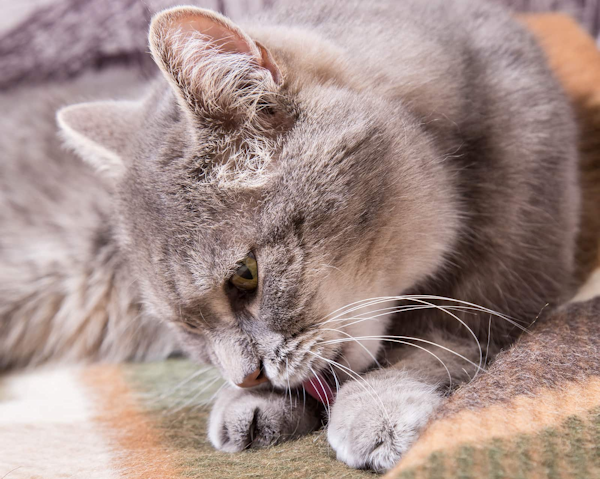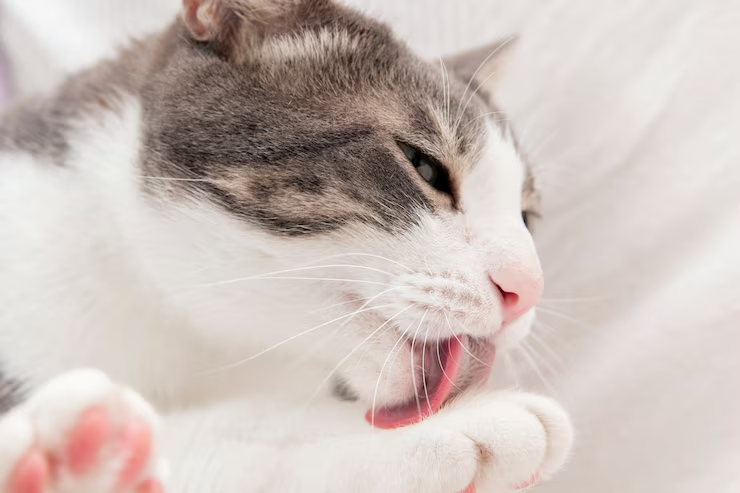
Introduction
Cats use their paws to jump, play, groom, and greet us with gentle taps. Healthy paws, or “cat palms,” keep every adventure safe and fun. This Cat Palm Care Guide will show you simple steps to look after those tiny pads from kitten days to golden years. The words are easy, the sentences are short, and the advice works for every family. Let’s begin the journey toward stronger, happier paws.
Why Healthy Paws Matter
Your cat’s paws are more than soft cushions. They have nerves that sense heat, cold, and rough ground. Strong pads let your cat land safely after a leap and grip toys during play. When pads crack, swell, or pick up dirt, they hurt. Small hurts can stop your pet from walking well. Good Cat Palm Care keeps cuts away, stops infection early, and lets your cat stay active. Better paw health also means fewer vet bills, which every owner loves.
Understanding the Cat Palm
Look closely at a paw. You will see four small digital pads, one larger central pad, and a claw under each toe. Pads feel like rubber, but they are skin. They can dry out or bleed if we ignore them. Nails grow forever and curve if we forget to trim. Hair between toes might knot. Because the paw has blood vessels close to the surface, even tiny wounds can bleed fast. Knowing this structure is the first step in Cat Palm Care.
Indoor Cat Care Tips for Beginners
Living indoors keeps your pet safe from traffic and harsh weather, yet new owners still face paw problems. Floors can hide dust or small toys that poke. Clean often so your cat steps on smooth ground. Wipe spills right away; sticky spots can snag fur. Give climbing trees with soft sisal rope rather than rough carpet that may pull nails. Place cozy mats near windows where sunshine streams in. These simple Indoor Cat Care Tips for Beginners build a friendly space and protect delicate feet.
Next, check your litter box setup. Rough litter can scrape pads. Test a few brands until you find one with fine grains. Scoop twice a day; clean boxes invite your cat to dig without fear of germs. When you choose toys, avoid sharp edges. Fabric mice or feather wands feel gentle and still spark play. Remember, Cat Palm Care starts with the home you build.

Daily Cat Palm Care Routine
A short daily check stops big troubles. First, watch your cat walk. Smooth strides mean comfy paws. Limping signals pain. Then, gently lift each foot. Brush away dirt with a damp cloth. Check pads for cuts or pebbles stuck in folds. Trim long hair so it does not mat. Finish with a quick nail clip every ten to fourteen days. Clip only the clear tip; never cut the pink quick. Praise, treats, and calm voices turn grooming into bonding time.
Using a simple paw balm keeps pads soft. Choose a balm safe if licked. Massage a pea-sized drop onto each pad after play. The soft rub boosts blood flow and relaxes toes. Over time, this daily Cat Palm Care routine keeps cracks away and adds shine to every step.
Nutrition for Strong Palms
Food feeds skin. Offer high-quality protein, omega-3 fats, and vitamins A and E. These nutrients repair cells and make pads flexible. Fresh water flushes toxins that dry skin. If your cat eats dry kibble only, add a spoon of wet food or broth each day. Your vet might suggest a fish-oil supplement for extra shine. With the right bowl choices, Cat Palm Care happens from the inside out.
Play and Exercise to Protect Palms
Cats love sprints, pounces, and climbs. Exercise strengthens leg muscles that cushion each landing. Choose play sessions twice a day. Short bursts work best. Feather poles, laser dots, and crinkle tunnels keep movement safe on soft ground. Avoid rough pavement that scrapes pads. Rotate toys weekly so boredom never leads to chewing furniture, which could splinter and pierce paws. Active cats use energy and stay lean, lowering pressure on each palm pad.
Senior Cat Care: Extra Palm Support
Older cats slow down, yet they still need healthy feet. Senior Cat Care means warmer beds because thin skin chills fast. Place ramps near favorite couches so joints face less strain. Keep nails trimmed shorter; long nails can make seniors slip. Offer gentle stretching games like slow wand circles to keep blood moving. A joint supplement with glucosamine can ease pad swelling. With age, infections rise, so watch any cut closely and call the vet if redness lasts a day.
Cat Care Tips for Common Palm Problems
Even good routines meet surprises. Here are quick fixes in paragraph style:
If you see a tiny cut, rinse with warm water, dab dry, and press a clean cloth for one minute. Apply a vet-approved antiseptic cream. Keep your cat indoors until the skin seals. For cracked pads, check room humidity; dry air in winter steals moisture. Run a small humidifier near sleeping spots. A gentle paw soak in warm salt water softens rough skin. If swelling appears with a foul smell, schedule a vet visit. Early help beats long pain. These simple Cat Care Tips keep paws safe without fuss.

How to Take Care of a Cat
Paw care links to whole-body care. Feed balanced meals, offer fresh water, and give mental play. Brush fur to catch loose hairs before they tangle between toes. Clean ears and eyes so your cat feels fresh and ready to explore. Set regular vet visits twice a year; vets spot hidden problems early. Use love and patience. Speak softly, move slowly, and reward good behavior. When your cat trusts you, daily Cat Palm Care becomes a happy routine, not a battle. Click here
Choosing the Right Supplies
A small kit helps big time. Stock cat-safe paw balm, blunt-tip nail clippers, soft microfiber towels, and cotton pads. Keep a mild antiseptic and a tiny flashlight to spot splinters. Store everything in one basket so you never search long. Good tools turn care sessions smooth and quick.
When to See the Vet
Call the vet if a pad bleeds nonstop for more than five minutes, swells twice its normal size, or shows pus. Also seek help if your cat hides, refuses food, or licks one foot all day. These signs hint at deeper trouble, and early care saves money and pain. Even skilled owners need pro help sometimes, so never wait too long.
Conclusion and Friendly CTA
Healthy paws carry your cat through every leap and cuddle. With this Cat Palm Care Guide, you now have simple steps for cleaning, trimming, feeding, and playing. Stick to daily checks, and your pet will walk with silent grace for years. We love sharing more stories, pictures, and quick Cat Care Tips with friends like you. Visit our Pinterest community, say hello, and show us your cat’s cutest paw moments: